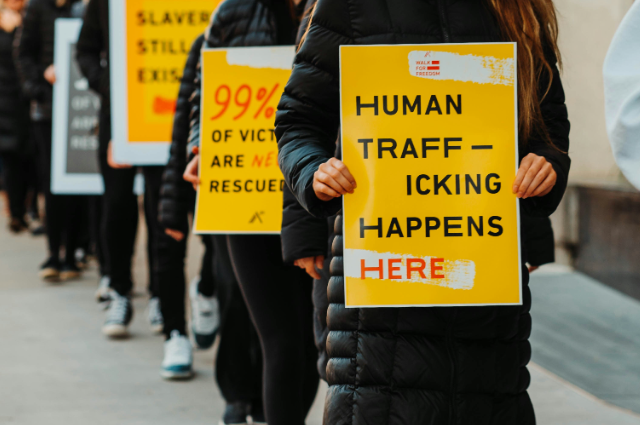
Photo by Hermes Rivera on Unsplash
The National Investigation Agency (NIA) has launched a significant operation targeting human trafficking networks by conducting searches at 22 locations across six states. This extensive action took place and reflects the agency's commitment to combating organized crime related to human trafficking.
Co-ordinated Efforts for a Common Goal
The search operations began early in the morning with multiple teams from the NIA working closely alongside state police forces. This collaboration is crucial for effectively addressing the complex nature of human trafficking which often involves intricate networks that span across various regions. The primary goal of these raids is to dismantle organized trafficking operations and bring those responsible to justice.
Targeting Suspected Traffickers
According to reliable sources, the locations targeted during these raids were chosen based on specific intelligence regarding individuals and organizations believed to be involved in trafficking vulnerable populations. The NIA's actions are part of a broader investigation into a criminal network that exploits people for illegal activities including forced labour and other forms of exploitation.
Transition from Local to National Investigation
The NIA has taken over this case, designated as RC-10/2024/NIA/DLI, from local law enforcement agencies. This transition underscores the seriousness of the allegations which involve the trafficking of men, women and children not only across state lines but potentially on an international scale. The agency's involvement indicates a heightened focus on addressing human trafficking as a national priority. In the recent raids by the NIA represent a crucial step in the fight against human trafficking. By targeting key players within this illegal network, the agency aims to protect vulnerable individuals and disrupt operations that profit from their suffering.
India’s Fight Against Human Trafficking: A Renewed Push by the NIA
India’s premier counter-terrorism and investigative agency, the National Investigation Agency (NIA), has recently taken charge of a critical case that underscores the country’s persistent battle against human trafficking. This development comes amid growing evidence of a larger organized network with possible connections to cross-border criminal syndicates. The involvement of the NIA signals a sharp effort to tackle the deeply rooted issue of trafficking in India by marking a significant shift towards coordinated and impactful action.
A Focused Crackdown on Trafficking Networks
In recent years, Indian authorities have stormed up efforts to combat human trafficking by targeting the supply chains that sustain this exploitative trade. These supply chains often include recruiters, transporters, and intermediaries who enable the illegal movement of victims across regions and in some cases it can be international borders. The recent raid by the NIA represents a crucial step in identifying and dismantling these networks by signalling the government’s commitment to not just rescue victims but also cripple the systems enabling such crimes.
Human Trafficking: A Persistent Challenge for India
Human trafficking remains one of India’s most pressing social challenges. Each year, thousands of individuals, particularly those from economically and socially marginalized communities had fallen victim to traffickers. These individuals are often lured by false promises of employment, education, or a better life and only to find themselves trapped in situations of exploitation. Women and children are especially vulnerable and frequently trafficked for purposes such as forced labour, sexual exploitation, or domestic slavery.
Laws and Enforcement: The Gaps in the System
Despite the existence of stringent anti-trafficking laws and India’s commitment to international conventions which is aimed at eradicating this menace, traffickers continue to find ways to exploit loopholes in the system. Weak enforcement, inadequate training of law enforcement personnel and the sheer complexity of tracking organized networks contribute to the persistence of trafficking operations. These challenges are further compounded by the socio-economic vulnerabilities of victims, which traffickers exploit with alarming ease.
The Role of the NIA: A Path Towards Change
The involvement of the NIA in this case represents a potential turning point. As an agency with significant resources and expertise in tackling organized crime, the NIA’s efforts could lead to more effective disruption of trafficking networks. By addressing the cross-border dimensions of such syndicates, the agency aims to not only bring perpetrators to justice but also create a deterrent effect.
While the NIA’s raid is undoubtedly a step in the right direction, it is only one piece of a much larger puzzle. Ending human trafficking in India will require sustained collaboration between government agencies, law enforcement, civil society and international partners. Alongside robust enforcement, there is a need for community awareness programs , better rehabilitation for victims and measures to address the socio-economic roots of vulnerability. The recent developments, however, offer some hope that a coordinated and determined approach could make a meaningful difference in this critical fight.
. . .
References:
